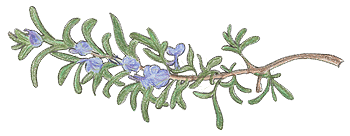The Rollo statue north of the Sons of Norway lodge in central Fargo is a century old. It was one of five Norwegian monuments erected in Fargo in the decade following Norway's independence from Sweden in 1905, part of a resurgence in ethnic pride led locally by Dr. Herman O. Fjelde of Wahpeton.
Rollo was a Norse conqueror originally known as Gange Hrolf. After plundering various northern European kingdoms for thirty years, Hrolf agreed to Frankish King Charles the Fat's offer of a duchy northwest of Paris and the king's daughter's hand in marriage in return for defending Charles's kingdom against further Norse attacks. Hrolf also agreed, at least nominally, to accept Christianity, and he was baptized under the name of Rollon (later anglicized to Rollo).
The Fargo statue is one of three replicas of an 1865 work by the world-renowned artist Arsene Letellier. In response to requests from the Sons of Norway, officials from the French city of Rouen agreed to task the Norwegian Society of America with finding a suitable location for the statue. Fargo was selected over its chief rivals Eau Claire, Minneapolis, and Moorhead, Minnesota, and so some 15,000 spectators gathered outside the Great Northern Railway depot in downtown Fargo to witness the unveiling of the statue on July 12, 1912. The event was marred by a minor diplomatic incident when a University of Wisconsin professor made offensive remarks about Catholicism, incensing the French dignitaries present and souring relations between Rouen and Fargo.
The diminished public visibility of Rollo's current location reflects a decline in the Norwegian cultural presence in Fargo. According to the 1910 Census, 16.5% of Cass County residents at the time were either Norwegian immigrants or first-generation Norwegian Americans. Unlike the great celebration that greeted the statue's arrival nearly a century before, the rededication ceremony in 1990, when the statue was relocated, attracted only a handful of onlookers. The passing of the immigrant generation can be considered the main determinant in the reinterpretation of Rollo and his movement to a less visible location.
This does not necessarily mean that Rollo's new place in Fargo's culture is any less significant, however. Standing in full view from the entrance to the Sons of Norway Kringen Lodge, Rollo is now in the company of those whose ancestors brought him to Fargo. Perhaps it is there, near a thriving stronghold of Norwegian identity, where Rollo can most effectively memorialize the city's Scandinavian heritage.--Research by Jared Sullivan, HIST 489, NDSU, Spring 2007
Recommended Reading
Sawyer, P.H. Kings and Vikings: Scandinavia and Europe, AD 700-1100. New York: Methuen, 1982.
Johannessen, Jan. Norwegian Footprints. Oslo: Pompel & Pilt, 2005.
Gjerde, John. The Minds of the West: Ethnocultural Evolution in the Rural Middle West, 1830-1917. Chapel Hill: University of North Carolina Press, 1997.
Sons of Norway / Dudo of St. Quentin's Gesta Normannorum / Fargo History Page on Rollo Statue / Rollo of Normandy Homepage
| Photo Gallery |
 |
 |
 |
 |
Photos by Jared Sullivan, 10 May 2007 |
Video
17 May 2007 |
|---|
Want to talk about this monument, or other heritage sites on the northern plains? Join the discussion on Facebook. Check out the center's Facebook group, Heritage Trails.
 Remembrance in Stone / Center for Heritage Renewal
Remembrance in Stone / Center for Heritage Renewal